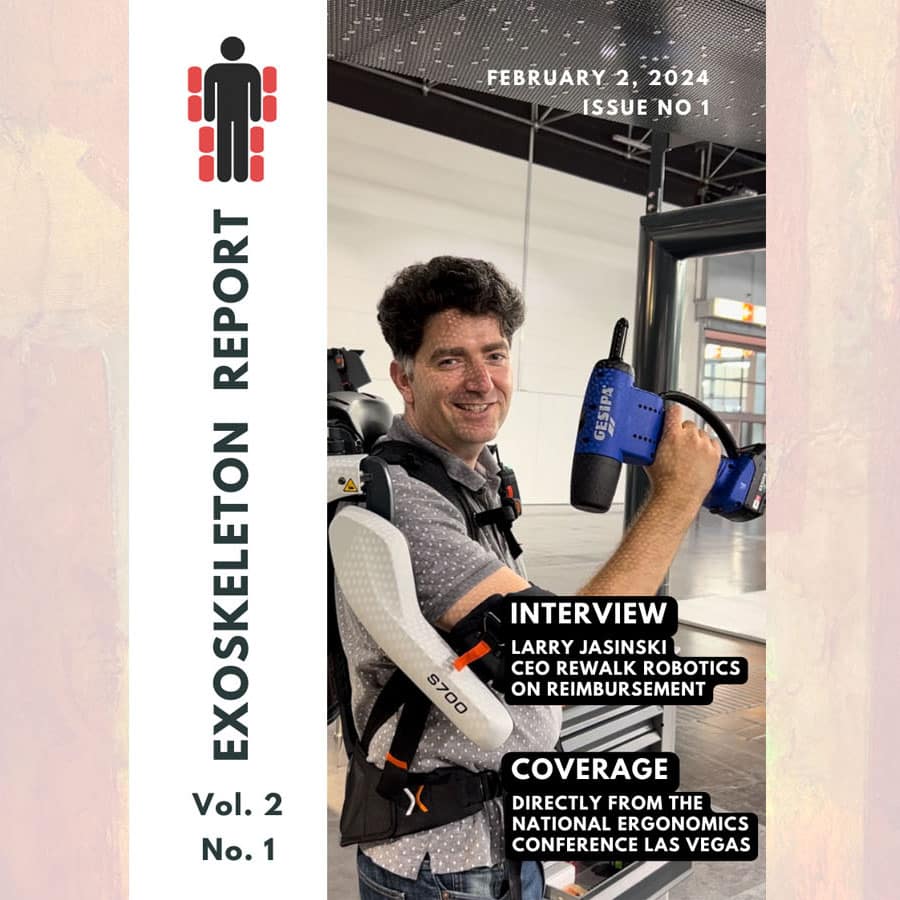The researches at the ReNeu Robotics Lab at the Cockrell School of Engineering at the University of Texas at Austin have posted progress on their stationary exoskeleton for rehabilitation: HARMONY. The ReNeu Robotics Lab specializes on robotic-assist devices for rehabilitation of patients that have suffered a neuromuscular disability as a result of a stroke or an upper body injury. Normally, such patients have to go through extensive physiotherapy and repeatedly perform exercises with the help and assistance of professionals.
A stationary exoskeleton robot, such as the HARMONY, can potentially provide the following benefits during rehabilitation exercises:
- Support of the upper body
- Reduce the risk of injury by controlling or limiting the range of motion to prevent joint hyper-extension or overloading.
- Provide assistive force during exercise movement than can be scaled down with time.
- Link the desired motion to a monitor or virtual reality set via the exoskeleton for the purposes of creating interactive rehabilitation tasks or games.
- Provide precise feedback that can be reviewed by the lead therapist.
To see the HARMONY rehabilitation robot in motion see the video below:
The HARMONY project team of graduate students is led by mechanical engineering researcher Ashish Deshpande. Some additional design goals to the ones outlined earlier is to have the exoskeleton always stay active so it feels weightless to the user. This will be somewhat more difficult to implement than the previously outlined design considerations. Ultimately this will not be so important, as long as the forces the exoskeleton exerts on the user do not interfere with the rehabilitation exercises. Ultimately, fixed (attached to the wall or a support beam) exoskeletons can help patients recover strength and motor skills faster, more efficiently and in more creative ways.

“HARMONY is the culmination of years of research and development in the ReNeu Robotics Lab,” said Deshpande, assistant professor in the Department of Mechanical Engineering. “It was specially designed to offer customized therapy for optimal efficacy. Not only does the exoskeleton adjust to patient size, it can also be programmed to be gentle or firm based on the individual’s therapy needs.”
The first versions of the HARMONY rehabilitation robot were constructed in 2011. The current model, designed with the help of Meka Robotics from San Francisco, is connected to patients in three places, sports 14 actuators and collects data at 2000 hertz.
Prior Art

The HARMONY rehabilitation exoskeleton is not the first of its kind. In 2009 Jacob Rosen, then an Associate Professor of Computer Engineering in the Jack Baskin School of Engineering at UC Santa Cruz, led a team that developed a similar device. Rosen’s exoskeleton has fewer motors, and they are mounted on the wall behind the exoskeleton and transmit forces by a series of metallic wires. Even with all motors turned off, the exoskeleton itself felt quite unobtrusive but the wire-motor setup was a bit clunky.
“When a stroke affects the motor cortex, there is typically paralysis on one side of the body. Rehabilitation relies on the plasticity of the brain to regain movement, but the learning process requires a lot of time in physical therapy,” – Jacob Rosen.
In addition to its rehabilitation applications, this exoskeleton was also used as a test bed for human-machine interfacing. An operator would play basic computer games based on assigned tasks and position of the exoskeleton segments. For example, a patient would have to extend their arm, and they would watch on a computer screen how their virtual arm is touching an object at the correct distance and elevation. Furthermore, the exoskeleton was used with noninvasive surface electromyography (EMG). Surface electrodes on the skin were used to detect neural activity as specific segments of the exoskeleton were being moved, and then the neural signal linked to individual muscle groups.
Moving Forward

The HARMONY exoskeleton is now considered officially complete, but researchers will continue working on software development. The device is scheduled for human trials with 20 to 30 healthy subjects, followed up by a clinical study with stroke and spinal cord injury patients. Clinical studies that clearly demonstrate the efficacy of rehabilitation exoskeletons is a common theme in 2015, shared by research groups and exoskeleton companies alike.
For more information:
- View the original HARMONY news release from the UT Austin website
- Visit the Link to: ReNeu Robotics Lab website, UT Austin.
- Read the Link: UC Santa Cruz news release on Jacob Rosen’s exoskeleton.



Is the Harmony robot approved for veterans?
To my knowledge, the Harmony is a research prototype of a class of exoskeletons that doesn’t get as much publicity as it did once upon a time. I suggest that you try to contact the UT Austin ReNeu Robotics Lab to confirm.
Will the VA get me one?